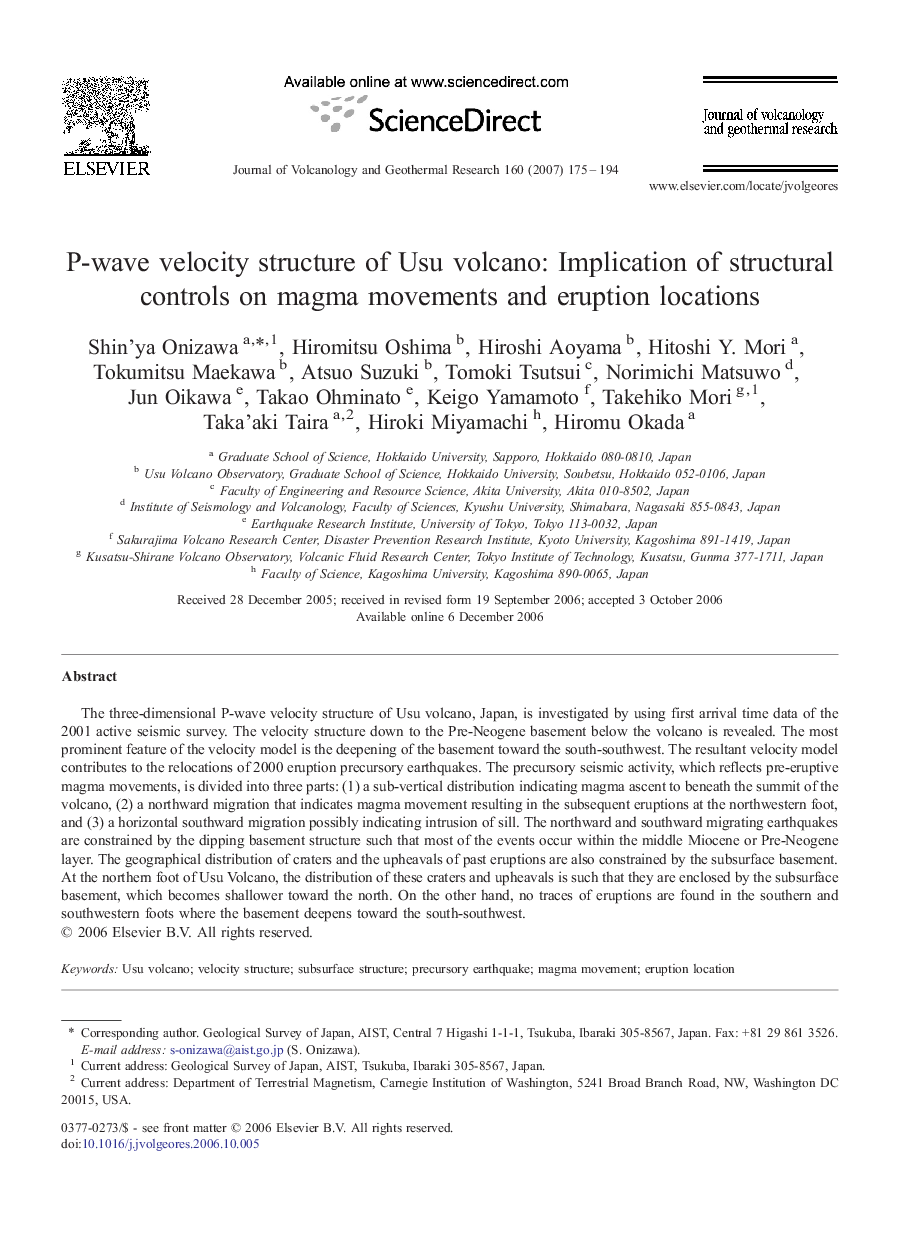| Article ID | Journal | Published Year | Pages | File Type |
|---|---|---|---|---|
| 4713986 | Journal of Volcanology and Geothermal Research | 2007 | 20 Pages |
Abstract
The three-dimensional P-wave velocity structure of Usu volcano, Japan, is investigated by using first arrival time data of the 2001 active seismic survey. The velocity structure down to the Pre-Neogene basement below the volcano is revealed. The most prominent feature of the velocity model is the deepening of the basement toward the south-southwest. The resultant velocity model contributes to the relocations of 2000 eruption precursory earthquakes. The precursory seismic activity, which reflects pre-eruptive magma movements, is divided into three parts: (1) a sub-vertical distribution indicating magma ascent to beneath the summit of the volcano, (2) a northward migration that indicates magma movement resulting in the subsequent eruptions at the northwestern foot, and (3) a horizontal southward migration possibly indicating intrusion of sill. The northward and southward migrating earthquakes are constrained by the dipping basement structure such that most of the events occur within the middle Miocene or Pre-Neogene layer. The geographical distribution of craters and the upheavals of past eruptions are also constrained by the subsurface basement. At the northern foot of Usu Volcano, the distribution of these craters and upheavals is such that they are enclosed by the subsurface basement, which becomes shallower toward the north. On the other hand, no traces of eruptions are found in the southern and southwestern foots where the basement deepens toward the south-southwest.
Related Topics
Physical Sciences and Engineering
Earth and Planetary Sciences
Geochemistry and Petrology
Authors
Shin'ya Onizawa, Hiromitsu Oshima, Hiroshi Aoyama, Hitoshi Y. Mori, Tokumitsu Maekawa, Atsuo Suzuki, Tomoki Tsutsui, Norimichi Matsuwo, Jun Oikawa, Takao Ohminato, Keigo Yamamoto, Takehiko Mori, Taka'aki Taira, Hiroki Miyamachi, Hiromu Okada,
